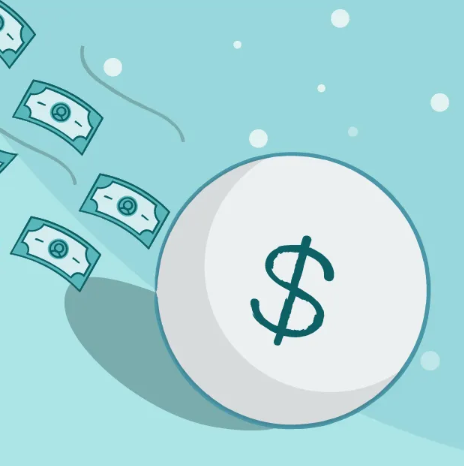Are you tired of struggling with debt and feeling like it’s never-ending? The Debt Avalanche method might just be the solution you’re looking for. This approach helps you pay off debt efficiently by tackling the highest interest rates first, saving you money in the long run. Here’s a breakdown of how it works and how it can help you get out of debt faster.
What is the Debt Avalanche?
The Debt Avalanche is a debt repayment strategy that focuses on paying off the debts with the highest interest rates first. By doing so, you minimize the amount of money spent on interest, allowing you to pay off your debt faster. This approach is ideal for those who want to save money and get rid of debt in a logical, focused way.
While the Debt Snowball method targets the smallest debt first for a quick emotional win, the Debt Avalanche is all about maximizing efficiency and math. It may not offer the instant gratification of the Snowball method, but it’s a powerful way to reduce your debt load and the interest you pay.
How to Set Yourself Up for Success
Before diving into the Debt Avalanche method, a little financial preparation can go a long way in ensuring your success.
- Create a Budget: Understanding how much money you have coming in and going out is crucial. Setting up a budget allows you to know exactly how much extra cash you have available to put toward your debt each month.
- Build an Emergency Fund: Unexpected expenses are part of life. An emergency fund of at least $1,000 will help keep you from derailing your debt repayment progress. Once you’re debt-free, you can work toward building a larger fund to cover 3 to 6 months of expenses.
- Prioritize Debt Repayment: Debt should be a top priority. Make sure you commit to paying off your debt, even if it means cutting back on some non-essentials. The Debt Avalanche works best when you fully dedicate yourself to the process.
- Free Up Extra Cash: Start trimming your spending. Cutting things like cable TV, expensive phone plans, and unnecessary subscriptions can free up hundreds of dollars that you can put directly toward your debt.
The Steps to Implementing the Debt Avalanche
Once your finances are in order, it’s time to start tackling your debt using the Debt Avalanche method.
Step 1: List Your Debts
Make a list of all your debts, excluding your mortgage. Rank them from the highest interest rate to the lowest. The debt with the highest interest rate should be at the top.
Step 2: Pay the Minimum on All Debts, Except the Highest Interest Debt
For all your debts except the one with the highest interest rate, make only the minimum payment each month. Direct any extra money you have toward the debt with the highest interest rate.
Step 3: Apply Extra Funds to the Highest Interest Debt
Once you’ve set up your budget and have identified extra money to put toward your debt, apply all of that to the debt with the highest interest rate. The more you can pay, the faster it will be paid off, and the more interest you’ll save in the long run.
Step 4: Move on to the Next Debt
After you’ve paid off the debt with the highest interest rate, take the money you were using to pay it off and apply it to the next debt with the highest interest rate. Continue this process until all your debts are paid off.
Example of the Debt Avalanche in Action
Let’s take a look at a real-life example. Imagine you’ve freed up $1,500 a month to pay off debt, and your debts are as follows:
- Credit Card #1: $5,000 at 18% APR (minimum payment: $100/month)
- Credit Card #2: $1,200 at 15.4% APR (minimum payment: $30/month)
- Car Loan: $8,200 at 4% APR (minimum payment: $410/month)
- Student Loan: $16,500 at 4.29% APR (minimum payment: $220/month)
In this case, you would focus on paying off Credit Card #1 first, since it has the highest interest rate. After paying the minimum on the other three debts, you’d have $840/month left to put toward Credit Card #1. This would allow you to pay it off in 6 to 7 months, saving over $13,000 in interest compared to making only the minimum payments.
Once Credit Card #1 is paid off, you’ll take that $840 and apply it to Credit Card #2, and so on, until all debts are cleared.
Final Thoughts
Paying off debt is never easy, but with the Debt Avalanche method, you can approach it in the most efficient way possible. By targeting high-interest debts first, you’ll save money on interest and get out of debt faster. While it may take time and effort, the rewards of financial freedom are well worth the sacrifice. Stick with it, and you’ll be amazed at how quickly you can eliminate your debt and take control of your finances.

发表回复